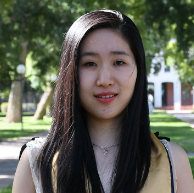For a second year, the CCTS supported a Statistical and Analytic Methods Development funding opportunity. Applications submitted to this competitive program seek to develop novel statistical and computational approaches and related methodologic innovations that bridge the gap between data and clinical application. Dr. Robert Oster, Director of the CCTS Biostatistics and Epidemiology and Research Design (BERD) and Professor in UAB’s Division of Preventative Medicine, shared his enthusiasm for the program by saying, “This funding opportunity is the result of nationwide CTSA-level brainstorming. It supports building methodologic research tools, which is space that is frequently used in research studies but not often directly funded. I’m excited about the capacities that this funding program may help launch.” The CCTS is pleased to announce the 2023 Statistical and Analytical Methods Development projects selected for award: Jingyi (Ginny) Zheng, PhD
Jingyi (Ginny) Zheng, PhD
Assistant Professor
Department of Mathematics and Statistics
College of Sciences and Mathematics
Auburn University
Robust Functional Independent Component Analysis for Multivariate Functional Data
Choosing appropriate parameters for statistical methods can be complicated, even for a statistician. Dr. Jingyi (Ginny) Zheng seeks to make those decisions less error prone and more robust. She plans to develop determination methods for multivariate and functional Independent Component Analysis (ICA), which is one of the most commonly used statistical and computational techniques to separate source signals that exist in multivariate datasets. Dr. Zheng indicates that the work, “will enable us to accurately identify and isolate independent components of the signals and improve our ability to analyze and interpret complex data” such as electroencephalogram (EEG) and functional magnetic resonance imaging (fMRI) to demonstrate proof of concept. Moreover, Dr. Zheng’s methods can also be applied to a wide variety of fields, including chemistry, pharmaceutical manufacturing, geoscience and beyond. Melissa Smith, PhD
Melissa Smith, PhD
Assistant Professor
Department of Biostatistics
School of Public Health
University of Alabama at Birmingham
Extensions of Bayesian Kernel Machine Regression for Environmental Mixture Modeling with Heteroscedastic Health Outcome Data
Imagine the breath of homes that wealthy individuals can afford versus low-income earners. This is an example of heteroscedasticity, a term statisticians use to describe non-constant variance. Heteroscedasticity creates a challenge in statistics because most statistical formulas assume error terms are constant (e.g. all individuals purchase homes within their financial reach, not above or below). Dr. Melissa Smith will address this challenge by developing a method that identifies and accounts for heteroscedasticity, specifically when assessing complex relationships between variables and an outcome. Dr. Smith doesn’t plan to use the method for real estate purposes. Instead, she indicates that the method will, “enable us to better assess the relationship between environmental metal exposures on maternal health, reproductive and birth outcomes.” However, Dr. Smith’s method will be openly shared so that it may be leveraged by other statisticians within and beyond public health.
Written by Anne Russell, PhD